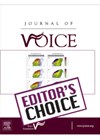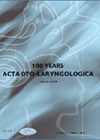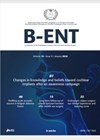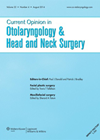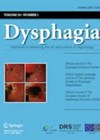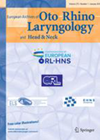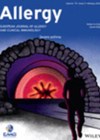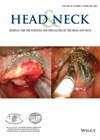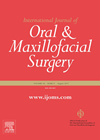
Journal Reviews archive for April 2020
Early injection laryngoplasty for iatrogenic vocal fold movement impairment – a safe and effective treatment
This Ed’s Choice examines the role of early injection laryngoplasty on swallowing dysfunction and is one of a few studies available in the literature. Research on early injection laryngoplasty has been predominately focused on voice and reducing the risk of...
Promising surgical technique for pulsatile tinnitus caused by sigmoid sinus dehiscence?
Pulsatile tinnitus (PT) can be caused by sigmoid sinus dehiscence (SSD). The authors report the results of 17 patients who underwent sandwich surgical technique for sigmoid sinus (SS) wall reconstruction for the treatment of pulsatile tinnitus caused by sigmoid sinus...
Chorda tympani in middle ear surgery
This was a prospective study at a single Belgian centre that aimed to monitor postoperative taste problems after middle ear surgery. The authors also looked at the influence of pathology and manipulation of chorda tympani (CT) on its function. Taste...
Endoscopic stapes surgery
This retrospective Turkish study looked at the audiological and surgical outcomes of 40 patients who underwent endoscopic stapes surgery over a three-year period. To assess the learning curve, the patients were divided into two groups based on the date of...
Paediatric idiopathic sudden sensorineural hearing loss
This Turkish retrospective study looked at the radiological and clinical characteristics, prognostic factors and treatment outcomes in children diagnosed with idiopathic sudden sensorineural hearing loss (ISSNHL). Forty-eight children were included over an eight-year period. Complete recovery (CR) was achieved in...
Updates on current evidence for biologics in chronic rhinosinusitis
For a comparatively short piece, this article manages to pack in a lot of important information about a complex emerging area of rhinology – immunologically targeted therapy (biologics). Immunologically targeted therapy is a rapidly progressing and expanding domain which is...
Increasing tongue strength to reduce dysphagia: what is the potential benefit of a device driven exercise?
Weakness in tongue muscle strength and laryngeal elevation is known to have an adverse impact on swallowing function. Various swallowing exercises are often recommended to improve function of these important structures with the goal of preventing aspiration and improving swallow...
Traditional incision and drainage of a quinsy may be more efficacious than aspiration
Peritonsillar abscess drainage has always been one of the first procedures an ENT junior doctor performs. Traditionally incision and drainage (I&D) was the mainstay of treatment. In recent years, needle aspiration of the abscess has become much more commonplace, perhaps...
The polyp shrinker
Inflammatory markers, including T2 cells beta common (βc) cytokines IL-3, IL5 and granulocyte-macrophage colony-stimulating factor (GM-CSF), are known to play an important role in chronic rhinosinusitis with nasal polyps (CRSwNP). CSL311, a monoclonal antibody (mAb), was developed to target human...
Active smoking predicts poor outcome in HPV positive oropharyngeal squamous cell carcinoma
Tobacco smoking is a well-known risk factor in human papilloma virus (HPV)-negative head and neck squamous cell cancer. Its effects include increased risk of treatment failure, distant metastases and reduced overall survival. HPV has been increasingly implicated as a causative...
Reasons for attending annual hearing aid review appointments
The aim of this study was to investigate what factors influence hearing aid users’ decision to attend or not attend an annual hearing aid review (HAR) appointment. Two separate surveys were created for attendees and non-attendees. An invitation letter was...
Clinical histopathology of 250 parotidectomy patients
Clinical histopathology of 250 parotidectomy patients This is a retrospective study of 250 consecutive parotidectomy patients at units in Belgium and the Netherlands. The sensitivity and specificity of FNAC was 64% and 99% respectively, the sensitivity being slightly lower than...

